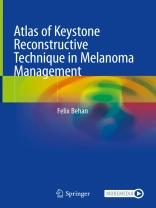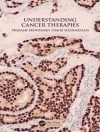Worldwide, it is quoted that 85% of Melanoma cases are treated surgically. The reliability of the Keystone Perforator Island Flap (KPIF) as a reconstructive technique has wide applications. Its low complication rate is the key to its surgical success. The technique is clearly explained in this Atlas by the author, a renowned plastic and reconstructive surgeon, who established this reconstructive principle over 20 years. The illustrations range from simple to complex cases in an easy-to-follow format. Audio files, as a supplementary tool, amplify the technique to enhance the reader’s experience and foster clear understanding. Chapters focussing on anatomical regions contain carefully selected cases accompanied by images to demonstrate a step-by-step surgical technique. The basic design format for all Keystones are highlighted, all sitting within the dermatomal precincts. The KPIF must contain a fascial base for lining and the island outline is an essential pre-requisite. It is hypothesized that this islanding creates a sympathectomy effect resulting in hyperaemic blood flow which optimises healing. Undermining up to 2/3 is permissible as long as there is a deep attachment of 1/3 at the base of the flap to contain the random perforator vascular support. This design allows the rotation, advancement and transposition (ART) of the flap to facilitate the reconstructive closures. Presumably, there are somatic and autonomic neural support lines accompanying the vascular pathways of these random perforator flaps. The vascular perforator tree must not be skeletonised (as in propellor flaps) to allow preservation of such anatomical elements – somatic, autonomic and lymphatic pathways, all of which are an essential component in any surgical repair. This KPIF provides an alternative to microvascular procedures where the biggest drawback is tissue match. The KPIF addresses this problem admirablywith a low pain component, an excellent aesthetic match with a low vascular complication rate and a performed in an expeditious manner – these all characterise the KPIF. Simple solutions solve problems and this KPIF Atlas for Melanoma becomes a welcome companion to any surgical speciality including plastic and reconstructive surgeons, surgical oncologists, general surgeons and dermatologists.
Mục lục
1. Principles of the Keystone.- 2. Major Head and Neck Regions Using the Keystone Technique.- 3. Major Trunk Defects Using the keystone Technique.- 4. Major Upper Limb Defects Using the Keystone Technique.- 5. Lower Limb Major Defects Closed with a KPIF technique.- 6. Conclusion.
Giới thiệu về tác giả
Felix C. Behan has a wide experience in Plastic and Reconstructive Surgery following his surgical training and clinical attachments in London at the St George’s, Royal Marsden and Westminster Hospitals. He has continued in this facility in Head and Neck cancer surgery at the Peter Mac Callum Cancer Institute where his appointment in the Head and Neck service extended from 1977 to 2014. He was instrumental in establishing the Melanoma Unit at the Peter Mac Callum Cancer Institute, which is now part of the Department of Surgical Oncology. He was formerly Head of Unit in the Plastic & Reconstructive Hand Surgery at the Western Hospital from 1988 where 50% of the work relates to Hand Surgery with cases numbering in the thousands totally per year. He was instrumental in establishing the reconstructive loco-regional flap called the Keystone Perforator Island Flap – KPIF, which has been the main reconstructive tool as an alternative to microsurgical procedures. The first publication of this principle occurred in the ANZ Journal of Surgery in 2003 and its applications since has resulted in over 35 further peer reviewed publications applying the principles all over the body, even in irradiated tissue. He established in this clinical record of over 3, 500 flaps over 20 years. The characteristics which are so clinically relevant in Reconstructive Surgery synopsised by the acronym P.A.C.E.S. – almost Pain free, satisfactory Aesthetic match, Complications of a vascular nature are extremely rare and Economic in terms of theatre time in the 2-hour timeframe compared with the microsurgical alternative and Sensory recovery in usually 3-6 months over the island flap with resolution of oedema, even after a chronic long-term injury. His full-time commitment in surgery was in the public service domain.












